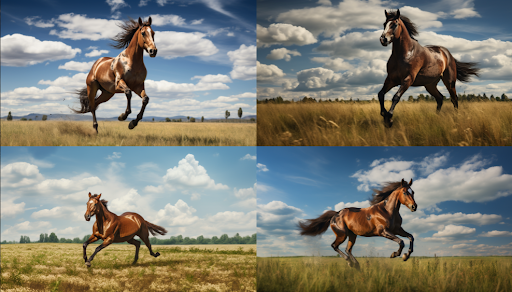Bring Digital’s Siobhan Congreve explains why AI is becoming an essential part of the PR process — and what you can do to level-up your campaigns using AI today.
Not a day goes by that we don’t see AI mentioned in the news. Whether it is Google Maps getting ‘supercharged’ with generative AI or a breakdown of the AI trends shaping the Marketing industry in 2024, it has quickly become a topic hard to ignore.
It’s hardly a new topic: other industries are simply catching up with what marketers have been saying for years. A study from Demandbase in 2016 revealed that 80% of marketers considered AI technology not a trend but a revolution that would revitalise how all industries approach their work.
Eight years on, that statement is eerily prophetic: 79% of marketers today are either already using or planning to use AI in their marketing strategies.
Now, with every Tom, Dick and Harry having their say, it’s my turn. So, here’s my two-pence-worth on how AI will impact Digital PR — and what you can do today to stay ahead of the curve.
J.G. Navarro recently conducted a worldwide study via Statista to learn what PR professionals expect to be most impacted by the eventual adoption of AI.
As you can see from the graph below, nearly 7 in 10 PRs expect AI to massively impact research processes, generating ideas and insights and developing media lists.
Research is the entryway for AI in any industry, so it makes sense that in Navarro’s survey, respondents were most likely to say it would impact the research phase.
The first stage of media list building can be tedious and repetitive, so relying on AI as the first port of call is an obvious option.
The good news is that AI tools have been developed explicitly for this job. With Propel, for example, once you have input your pitch, press release or campaign description into their media list builder page, AI can create a list of relevant journalists for you.
There will always be exceptions to the rule when building your media list. For example, you should contact journalists who have covered the increasing pension age for your FinTech client, but not all of those journalists will be relevant to what you want to achieve. I haven’t found an AI smart enough to do this reliably. Not yet, anyway.
Regardless, the pure fact is that a human will need to check this over with a fine-toothed comb before distribution. That’s an important step, so don’t forget it!
You can use AI tools to track and measure the reach, engagement, sentiment, and impact of your PR campaigns across various channels and platforms and compare performance against competitors, industry benchmarks, and best practices.
Again, there are specific AI tools designed to support this. They often go above and beyond to provide unique insights, trends, and recommendations for your brand or client. Brand24, in particular, is a leader in this area, so if you want to learn more about this, I recommend you read their complete guide on implementing media monitoring through AI.
As we know, AI is an integral part of the research phase. This applies to more than just the PR process but also the content creation process. You can utilise AI to develop a content brief — a crucial step that can be overlooked.
If you are working with ChatGPT and don’t have an existing content brief, you can ask it to create one. Make sure to include as much specific information as possible at this stage, such as the name of the business you are creating content for, what that business does, the content topic you’re making the brief for and any keywords you want the content to target.
Once ChatGPT has created a brief (and you’re happy with it), you can ask it to start writing the content for you — one section at a time. But be warned: sometimes, ChatGPT can get confused, writing sections outside of your brief. You can avoid this with patience: break down the brief one step at a time and keep refining as you need to.
The points covered so far do not consider AI’s full capabilities. So, while researching, media monitoring, and content writing are all areas of Digital PR that AI will undoubtedly impact, they aren’t the be-all and end-all. It goes a little deeper.
You will know what is coming here if you read my input into PRMoments PR Predictions for 2024. Last year, I predicted that “AI-assisted pitches and subject lines will be the weapon of choice for the best PRs next year.”
The generic messages we relied so heavily on as part of our bulk outreach are a thing of the past. Getting journalists’ attention with every passing monthly report gets more challenging and complex, but how do we get around that?
Hyper-personalisation.
Hyper-personalisation is the art of tailoring communications to an individual rather than to a group of people. For example, rather than coming up with an angle or a campaign for a group of journalists, you create one angle for one specific journalist or publication you know will be interested in.
At Bring, we have removed the doubt and doubled down on our “tactical pitching”. We’ve scrapped batch outreach for a client, and instead, we generate bespoke pitches for a select number of high-authority, relevant journalists. We’re constantly tweaking our pitches for journalists and publications to ensure what they care about most is brought into the limelight.
The next step will be bringing these two elements together to offer the personalisation of tactical pitching with the volume of bulk outreach.
Soon, the days we wait on stacked design teams for visual assets will be gone.
The sooner, the better, right?
Don’t get me wrong: designers are still important, especially when it comes to more complex assets like infographics and marketing collateral, all of which need to follow brand guidelines.
But AI is quickly becoming one of the go-to destinations for unique visuals across the board, and so it should. AI imagery isn’t expensive; it’s easy to access, and, most importantly, it doesn’t require you to have professional design skills.
Design tools such as Canva now have AI capabilities built into them and, depending on the prompts you use, aren’t churning out 17-fingered, random dog legs in the background kind of images that have haunted us previously, either.
AI image generators have progressed so quickly over the last six months alone that there are now ones that identify where they need to make edits.
The first step to success is ensuring you use the right AI image generator for what you want to create. For example, if you want real-life imagery that could pass as a photograph, then using an AI art generator won’t be the right choice, and you’ll never achieve your desired outcome.
The next major step will be developing your prompts. As with anything with AI, this is a matter of testing and learning what works for you and what you want to achieve.
Remember to be clear and to the point about what you want in the image before considering the stylistic prompts. These suggest how the image should appear, dictating a desired aesthetic, colour scheme, lighting, or art style without necessarily specifying the content of the image.
Our very own Content Executive, Alex Smithies, has been doing a lot of work on perfecting these prompts, which you can see from the example below.

Created in Midjourney
She created this set of images in Midjourney using the prompt:
/imagine a large racehorse running in a field, a few clouds in the sky, organic movement, hyper-realistic photograph, iso 200, –ar 7:4
Let’s break this down:
[/imagine] – This helps the AI understand what kind of picture Alex wanted it to create
[a few clouds in the sky] – Alex gave AI-specific details to add atmosphere and depth to the image
[organic movement] – Alex wanted the racehorse’s motion to appear natural and fluid, without any stiffness or mechanical appearance
[hyper-realistic photograph] – She also wanted a lifelike photograph
[iso 200] – Alex then told the AI to mimic camera settings for her desired image appearance
[–ar 7:4] – Finally, Alex gave MidJourney the specific image size she wanted (AR meaning “aspect ratio).
While we need to prioritise how AI can make PR lives easier and more efficient, we must also consider how journalists use it.
A report from JouralismAI looked into what news organisations are doing with artificial intelligence, and it revealed that 90% of newsrooms globally are already using some form of AI in news production, 80% are using it for news distribution, and 75% are using AI for newsgathering.
In more detail, newsgathering tasks include:
On the other hand, news production includes translating articles into other languages, proofreading, writing headlines, and writing full articles. Distribution includes using AI to drive SEO recommendations and tailor content to a specific audience.
Newsrooms continue to view human intervention in content production as crucial to mitigating the potential harms of AI systems, like bias and inaccuracy. Even as respondents worried that AI technologies could exacerbate biased news coverage and the misrepresentation of marginalised groups, few organisations provided solid examples of any potential solutions.
More than half of the respondents were looking to use AI for increased efficiency and enhanced productivity, stating that, ideally, AI can automate monotonous and repetitive tasks. Around a third of respondents, on the other hand, said they hoped AI technologies would help them reach a wider audience, personalise reader experiences, and enhance audience engagement.
Mark Seall, CEO of AI solutions provider InferenceCloud, told PRMoment: “We will see true leaders emerge — from in-house teams and agencies alike — who embrace the challenge of transforming the way they work. The limitations of AI lie not in the technology itself but in how creatively we apply it. The gap between the true adopters and the tinkerers in terms of value delivered will increase.”
It is easy to see why.
When introducing AI to your internal processes, it can be easy to play around with it because you feel like everybody else is, and you want to try and keep up. This can easily lead to the downfall of implementation – all the intentions are there, but you need more motivation, investment, or time to activate them.
You will need to have the backing of senior leadership across your business as you will need to ensure your teams aren’t at 100% capacity so you can make time for AI-led innovation. It is an investment, but it’s worth it in the long run.











